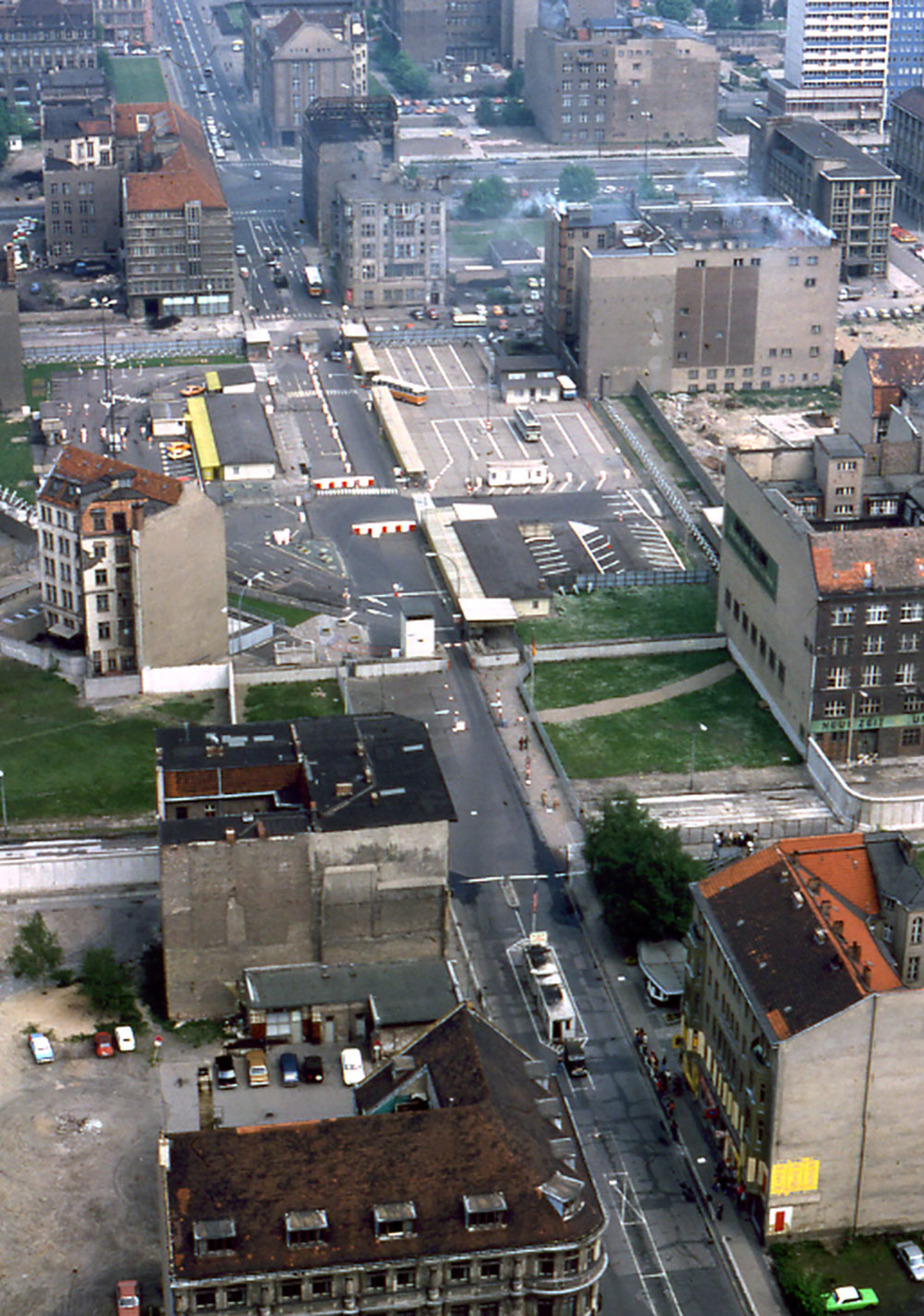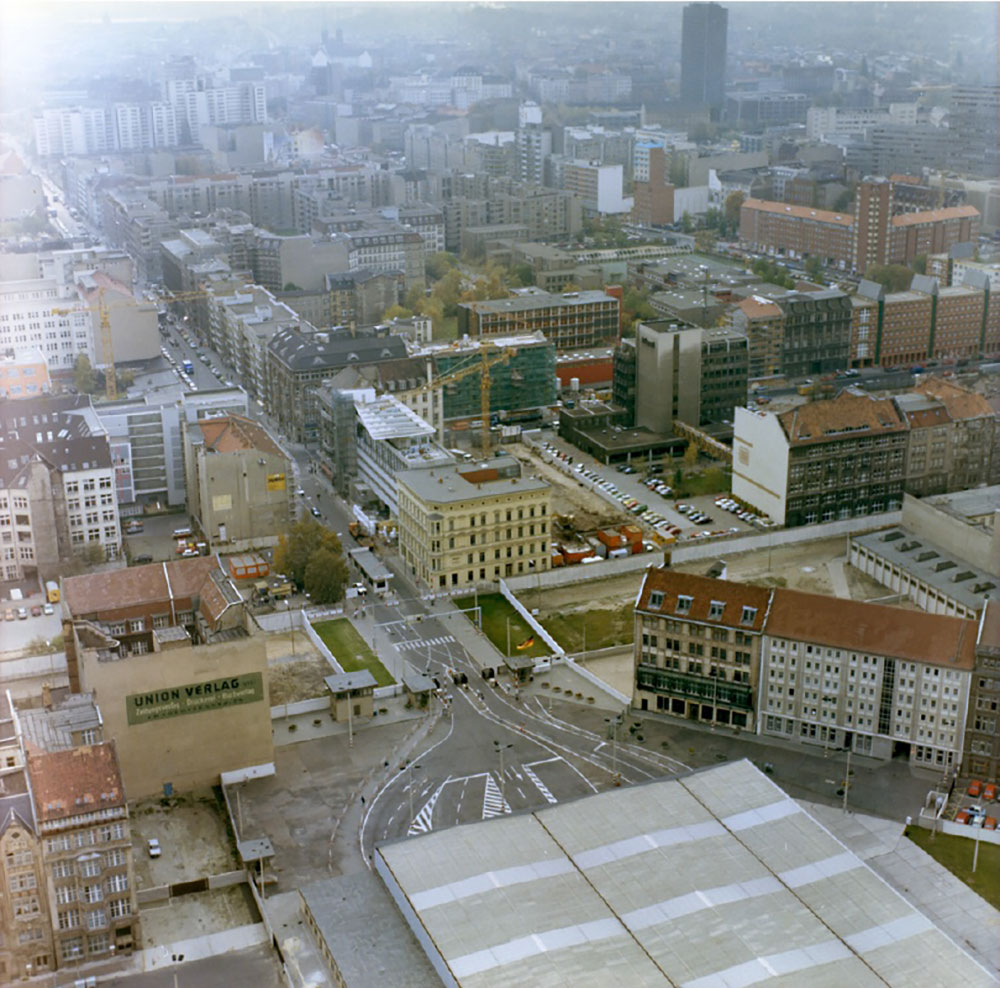The Border Crossing
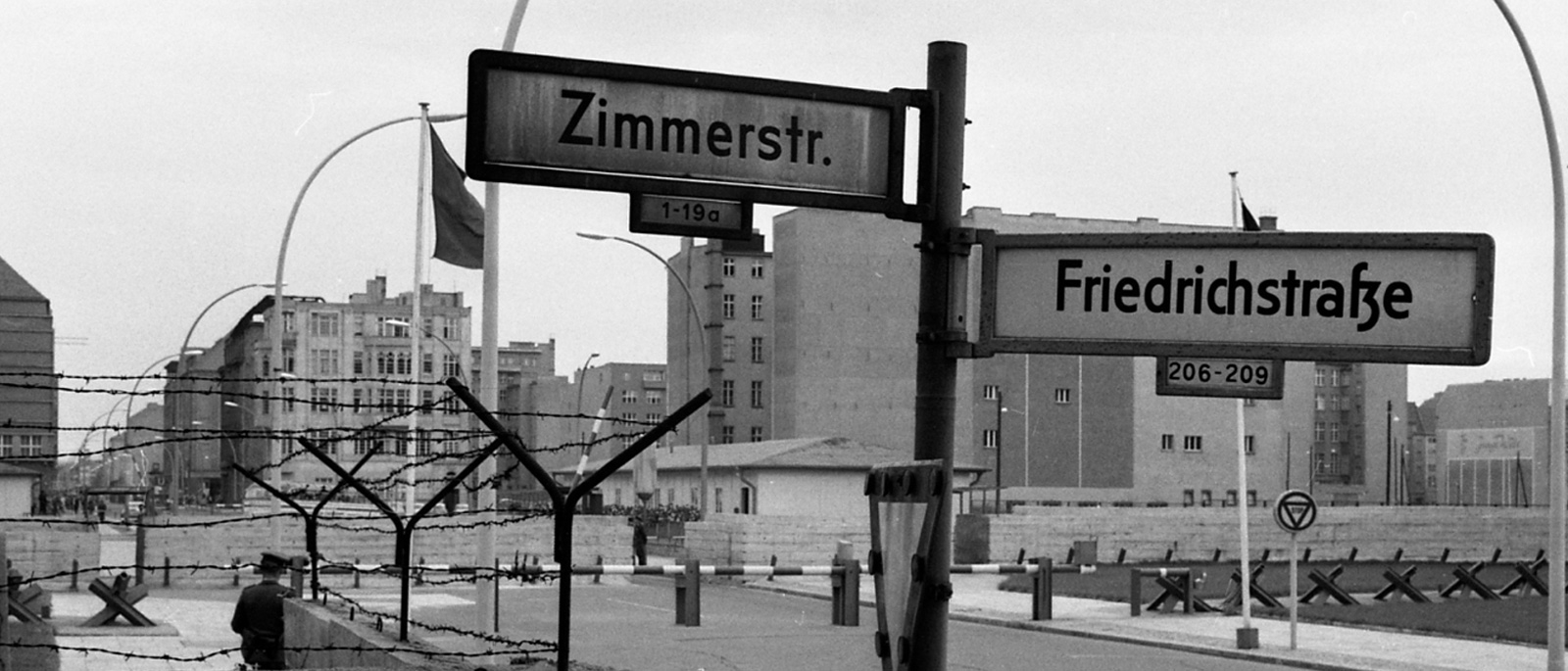
The GDR border crossing at Friedrichstrasse and Zimmerstrasse, 1962-63 © Berlin Wall Foundation, Reiner-Michael Ernst
The border crossing at Friedrichstrasse and Zimmerstrasse has been rebuilt and extended many times over the years. As the Allied Checkpoint Charlie, it became one of the most internationally recognised sites of the Cold War. It was here that the confrontation between the superpowers came to a head. It was here that international politicians and stars appeared. But it is also the site of daring escapes and tragic deaths at the Berlin Wall.
The site became famous through a single event: In October 1961, U.S. and Soviet tanks engaged in a menacing standoff in the middle of Berlin. Photos of this event were seen around the world and have become iconic images of the Cold War.
The GDR had closed the border in Berlin ten weeks earlier and created a border crossing at the corner of Friedrichstrasse and Zimmerstrasse. It was meant to be used exclusively by Western Allied military personnel, diplomats, and people from abroad. The Western Allies protested against this restriction on their freedom of movement, which was guaranteed to them through the city’s four-power status. But eventually they accepted it and set up their own checkpoint on the West Berlin side.
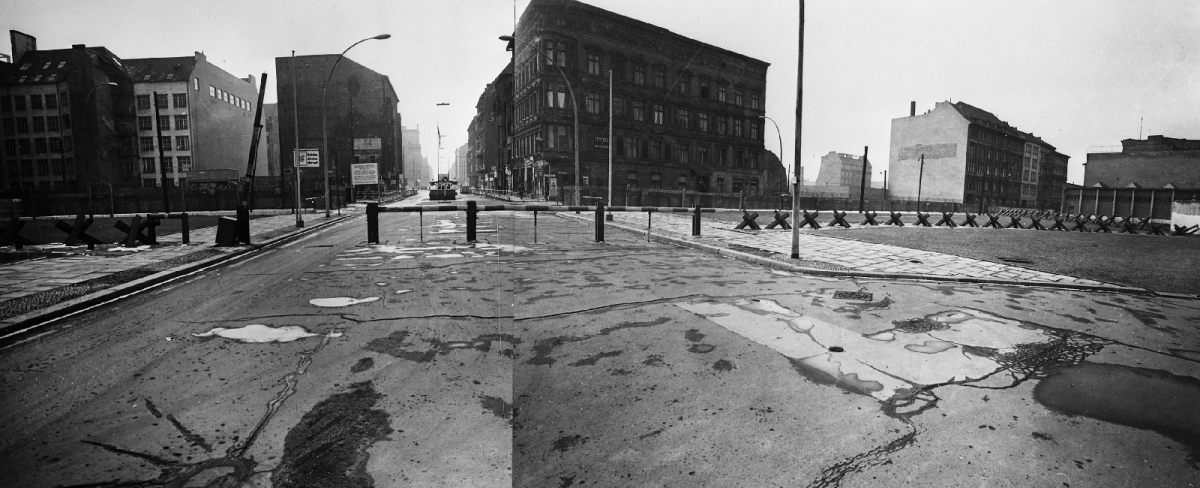
View from the GDR border crossing towards West Berlin, 1960s © Bundesarchiv
Following the NATO alphabet, it was named Checkpoint Charlie – after Checkpoint Alpha on the inner-German border and Checkpoint Bravo on the border between East Germany and West Berlin. Initially, only the US occupying forces, but soon the British and French military also controlled border traffic and the protection of Allied rights here.
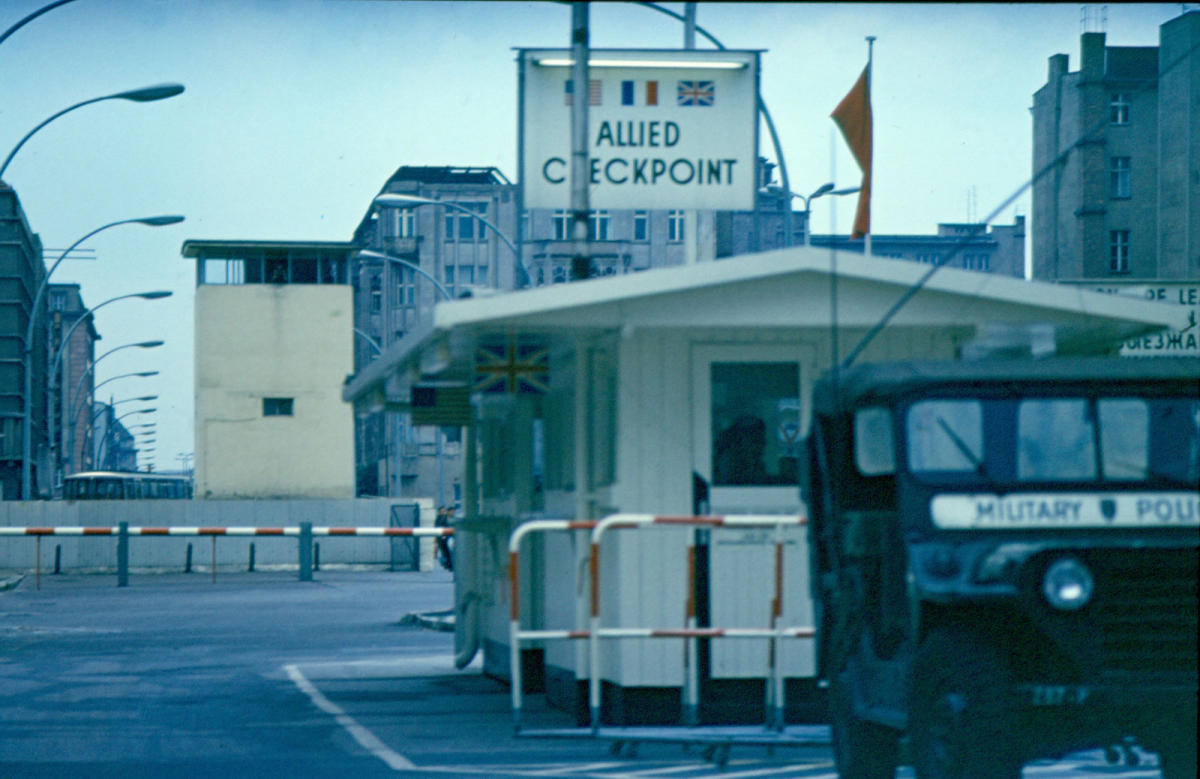
The Allied control booth and the watchtower of the GDR border crossing, around 1969 © Berlin Wall Foundation
On official state visits, guests were often taken to this world-famous site of the Berlin Wall. It also became a popular place for protests. The protesters were often welcomed by the House at Checkpoint Charlie, a museum run by Rainer Hildebrandt. In 1963, he opened an exhibition about the Berlin Wall here that presented different escape attempts and addressed human rights issues. Thanks to this exhibition and a large viewing platform erected at the Wall, Checkpoint Charlie became a tourist attraction already before the fall of the Wall.
On the East Berlin side, the GDR continued to expand its border crossing and border strip. Throughout the 1960s, the GDR extended the border crossing over a wide area. It cleared ruins from the Friedrichstrasse grounds and erected security and clearance buildings there.
The border was blocked by barriers, massive concrete obstacles and tank traps. Pedestrians now had to enter a narrow passageway on the sidewalk. A small control tower was erected in the middle of Friedrichstrasse. It was replaced by a taller one in the early 1970s. To accommodate the increase in tourist traffic at the border in the 1970s, plans for an entirely new crossing were developed, but the new design was not completed until the 1980s. The border crossing area was paved with asphalt and more vehicle lanes were added. Border traffic was now routed not only along Friedrichstrasse, but also across the adjacent property between Friedrichstrasse and Mauerstrasse. In the mid-1980s, another major expansion took place. New control towers were erected and border control buildings were placed under a large hall construction.
The Allied checkpoint underwent structural changes too. The wooden guardhouse was enlarged and then replaced by a metal container in the mid-1970s. But it always remained an impermanent structure in the middle of Friedrichstrasse as a way for the United States to demonstrate its non-recognition of the city’s division.
The border crossing at Friedrichstrasse and Zimmerstrasse was a “hole in the wall” in two respects. For one, people from all over the world crossed the East-West border here, bringing different lifestyles and viewpoints into East Berlin and the GDR. At the same time, people from the GDR were able to escape to the West from here – using fake passports or uniforms, converted vehicles and more. However, four people also died in escape attempts near the GDR border crossing: three of them were shot by border guards as they tried to cross the border fortifications. Peter Fechter was one of them. In 1962, the 18-year-old bled to death at the Wall near the border crossing after being shot by border guards. One of the fatalities was a border soldier who was shot by an escape helper.
Victims of the Wall
Peter Fechter (1944–1962)
Peter Fechter bleeds to death at the wall in Zimmerstrasse during his escape attempt on 17 August 1962 after border guards shot at him without warning.
Read his full biography via the "Chronicle of the Berlin Wall" website here.
Herbert Halli (1953–1975)
Herbert Halli suffers fatal gunshot wounds during his escape attempt in Zimmerstrasse on 3 April 1975.
Read his full biography via the "Chronicle of the Berlin Wall" website here.
Reinhold Huhn (1942–1962)
Border guard Reinhold Huhn is shot dead by an escape agent on 18 June 1962 while stopping refugees on their way to an escape tunnel.
Read his full biography via the "Chronicle of the Berlin Wall" website here.
Burkhard Niering (1950–1974)
Burkhard Niering is fatally wounded by gunshots on 5 January 1974 while armed and attempting to cross the border crossing at Friedrichstrasse and Zimmerstrasse with a hostage.
Read his full biography via the "Chronicle of the Berlin Wall" website here.
